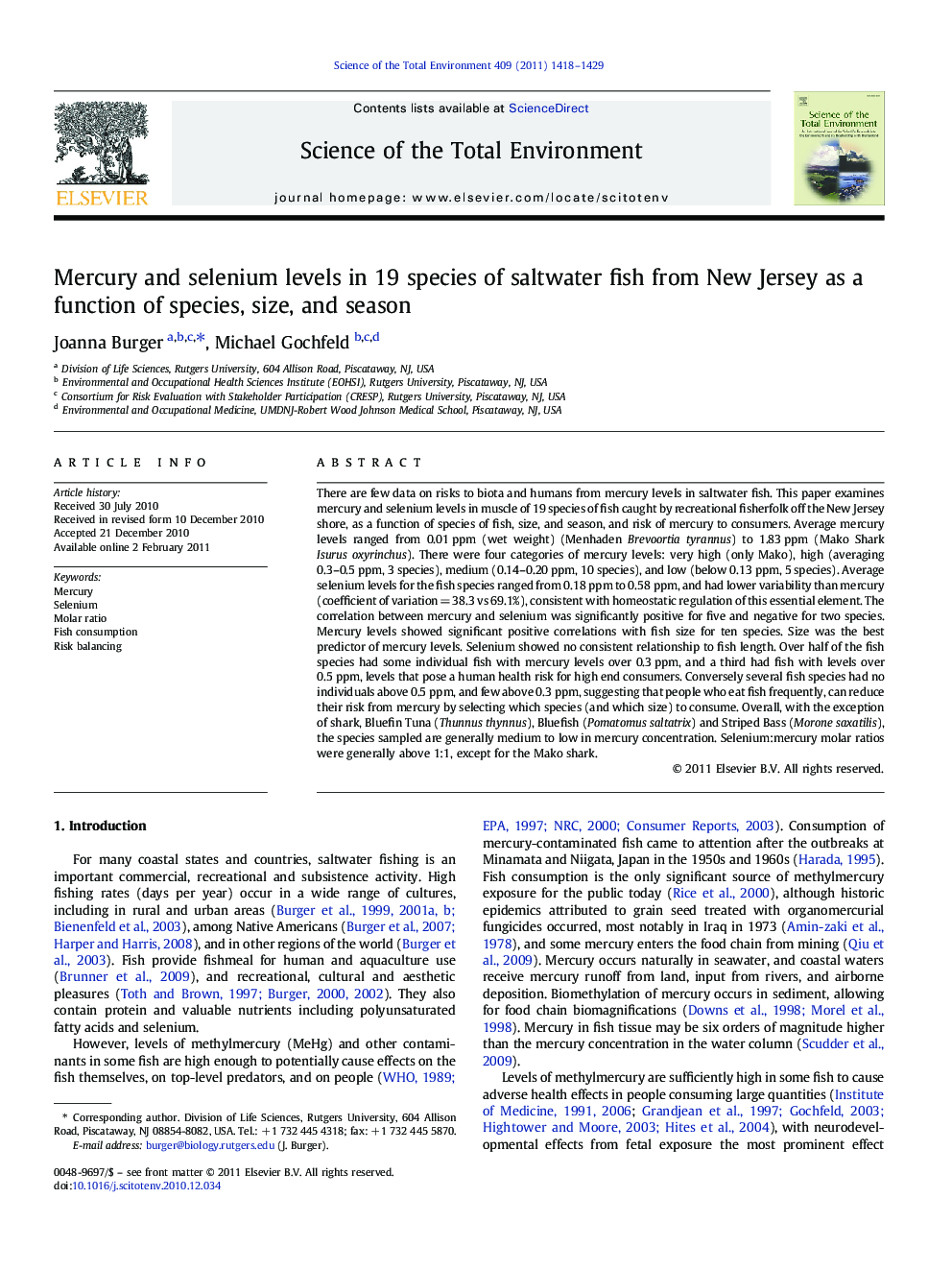| کد مقاله | کد نشریه | سال انتشار | مقاله انگلیسی | نسخه تمام متن |
|---|---|---|---|---|
| 4430852 | 1619854 | 2011 | 12 صفحه PDF | دانلود رایگان |

There are few data on risks to biota and humans from mercury levels in saltwater fish. This paper examines mercury and selenium levels in muscle of 19 species of fish caught by recreational fisherfolk off the New Jersey shore, as a function of species of fish, size, and season, and risk of mercury to consumers. Average mercury levels ranged from 0.01 ppm (wet weight) (Menhaden Brevoortia tyrannus) to 1.83 ppm (Mako Shark Isurus oxyrinchus). There were four categories of mercury levels: very high (only Mako), high (averaging 0.3–0.5 ppm, 3 species), medium (0.14–0.20 ppm, 10 species), and low (below 0.13 ppm, 5 species). Average selenium levels for the fish species ranged from 0.18 ppm to 0.58 ppm, and had lower variability than mercury (coefficient of variation = 38.3 vs 69.1%), consistent with homeostatic regulation of this essential element. The correlation between mercury and selenium was significantly positive for five and negative for two species. Mercury levels showed significant positive correlations with fish size for ten species. Size was the best predictor of mercury levels. Selenium showed no consistent relationship to fish length. Over half of the fish species had some individual fish with mercury levels over 0.3 ppm, and a third had fish with levels over 0.5 ppm, levels that pose a human health risk for high end consumers. Conversely several fish species had no individuals above 0.5 ppm, and few above 0.3 ppm, suggesting that people who eat fish frequently, can reduce their risk from mercury by selecting which species (and which size) to consume. Overall, with the exception of shark, Bluefin Tuna (Thunnus thynnus), Bluefish (Pomatomus saltatrix) and Striped Bass (Morone saxatilis), the species sampled are generally medium to low in mercury concentration. Selenium:mercury molar ratios were generally above 1:1, except for the Mako shark.
Research Highlights
► Mean mercury levels in 19 New Jersey saltwater fish species were from 0.01 to 1.83 ppm.
► Mean selenium levels ranged from 0.18 to 0.58 ppm.
► Mercury levels showed significant positive correlation with size for 10 species.
► Over half the species had some individuals with mercury levels >0.3 ppm.
► Eight species had some individuals with mercury levels >0.5 ppm.
Journal: Science of The Total Environment - Volume 409, Issue 8, 15 March 2011, Pages 1418–1429